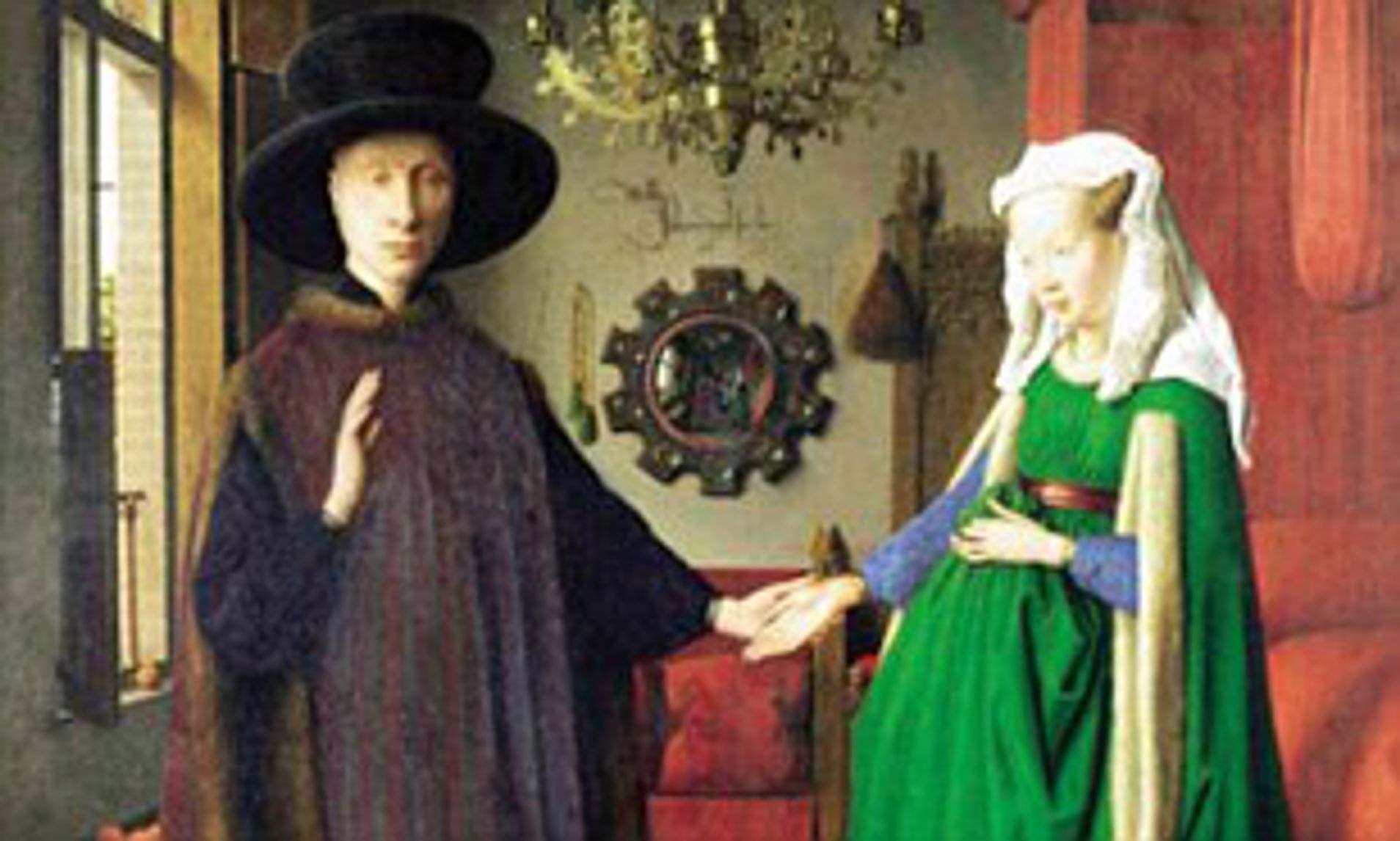
Robert Draws – The Arnolfini Portrait is one of the most famous paintings of the Northern Renaissance. Created by Jan van Eyck in 1434, this masterpiece is renowned for its incredible detail and use of symbolism. It captures a wealthy couple, Giovanni di Nicolao di Arnolfini and his wife, Costanza, in a moment of everyday life. However, the significance of this work goes far beyond its realistic portrayal of the couple. Through a careful analysis of the painting, we can uncover the deeper meanings and cultural context behind it.
The painting was created during a time of great economic growth in Flanders. The early 15th century was marked by the rise of the merchant class. The Arnolfini couple was part of this prosperous class. Giovanni Arnolfini, a wealthy Italian merchant living in Bruges, is believed to have commissioned the painting. The portrait was not just a simple depiction of the couple but also a statement of their wealth, status, and piety. It is also considered a prime example of the flourishing of oil painting in Northern Europe during this period.
Jan van Eyck was a master of oil painting, a medium that allowed him to capture rich textures, fine details, and deep colors. The technique was relatively new in Europe at the time, and van Eyck’s skillful use of oil paint helped bring the figures and their surroundings to life. His attention to detail was unmatched, and every element in the painting carries significance.
“Read about: Whistler’s Mother: The Story Behind the Masterpiece”
At first glance, The Arnolfini Portrait may seem like a simple wedding portrait. However, it is filled with symbols that tell a deeper story. The couple is shown standing in the center of the room, with Giovanni holding his wife’s hand. Their hands clasped together symbolize unity and marriage, but there are other elements that provide additional meaning.
In the background, a convex mirror reflects the scene, showing two figures standing in the doorway. Some interpret these figures as witnesses to the marriage. The mirror also reflects a small scene of the couple’s surroundings, which gives the viewer a glimpse into their domestic life. The mirror is often seen as a symbol of truth and the divine presence, suggesting that this marriage is sanctioned by God.
Additionally, the luxurious carpet on the floor, the ornate chandelier, and the fur-lined robes of the couple all emphasize their wealth. The dog at their feet, often seen as a symbol of fidelity, further underscores the theme of loyalty in marriage. The single lit candle in the chandelier could represent the presence of God in the couple’s lives, a divine witness to their union.
“Read more: The Fermented Food Revolution: Why Kimchi, Miso, and Kombucha Are Trending Again”
One of the most remarkable aspects of The Arnolfini Portrait is Jan van Eyck’s extraordinary attention to detail. Every object in the painting is carefully rendered, from the folds of the fabric to the intricate patterns on the carpet. This level of realism, therefore, is a hallmark of van Eyck’s work and contributes to the sense of immediacy in the scene.
Additionally, the artist’s use of light and shadow enhances the realism of the painting. The play of light on the glass chandelier and the reflective surfaces in the room shows van Eyck’s mastery of oil painting techniques. Each detail, no matter how small, serves to heighten the viewer’s perception of the scene and adds depth.
Furthermore, the textures in the painting are just as important. The rich fabrics, glimmering brass of the chandelier, and shiny wooden surfaces all give the painting a tactile quality. Van Eyck’s ability to capture these textures with such precision further contributes to the overall realism and visual depth of the work.
The Arnolfini Portrait has sparked much debate among art historians. Scholars have proposed various interpretations of the painting. Some believe it represents a wedding ceremony. Others suggest it might depict a betrothal. Some argue it symbolizes the couple’s commitment rather than a literal wedding scene.
The convex mirror and figures in the doorway have raised speculation. Some believe the couple was married in a private ceremony. The mirror could reflect the artist or other witnesses. Others suggest the painting depicts personal reflection or a celebration of the couple’s life together.
Regardless of the interpretation, The Arnolfini Portrait remains one of the most iconic and enigmatic works of the Northern Renaissance. Its use of symbolism, attention to detail, and realistic portrayal of the Arnolfini couple’s life has left an indelible mark on the art world.